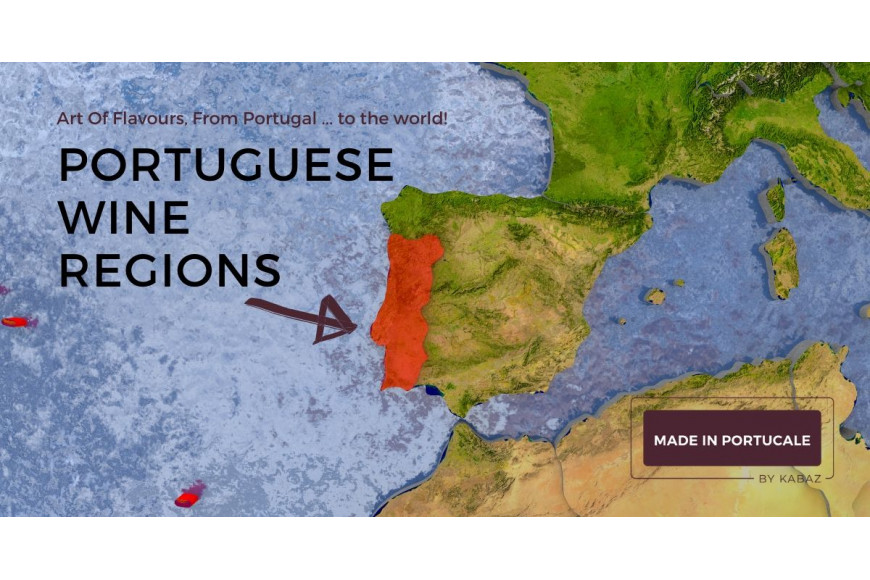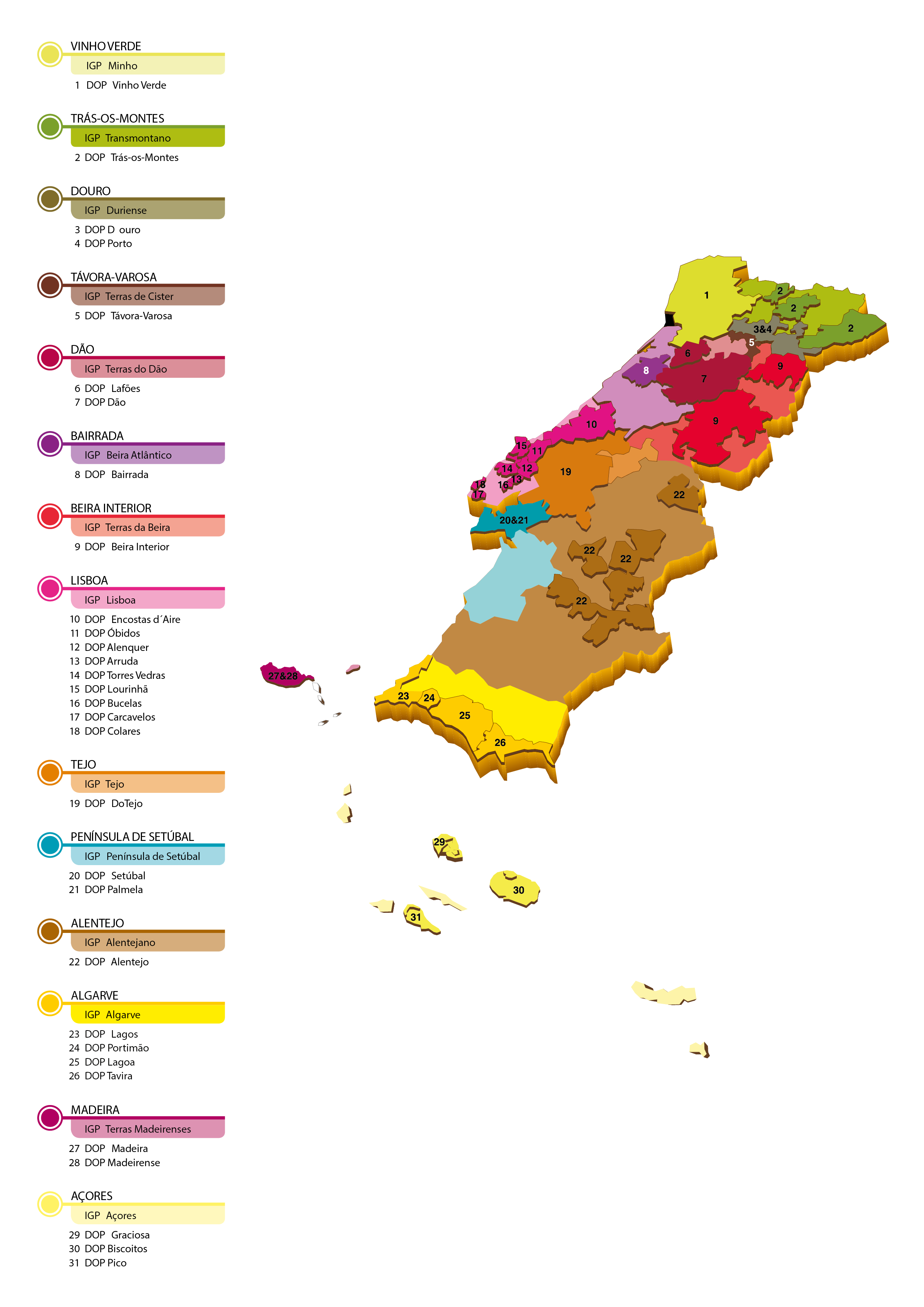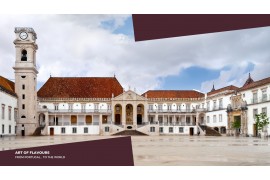
Portuguese Wines Regions - What you need to know.
We've noticed that the Portuguese, who love and appreciate very Portuguese wines, and everything related to the history and cuisine, which is one of the largest and most important asset that this small great nation offers to the world.
Then we like to share, it is intrinsically linked to our roots and culture as people, people and people of the world, that we perceive from an early age when we know a little more about this nation.
We believe that one of the distinguishing and qualitative factors is the variety and originality that can be obtained from the 14 Portuguese Wines Regions
Portugal, despite being a small country, has a history of global dimension and with more than 9 centuries, however despite its size, it presents a great diversity of soils. As a country with a typical Mediterranean climate, Portugal also has some climatic specificities.
The differences between the soils are visible from the north to the south of the country and are justified by the great differences in topography and geology that in turn also influence the cultivation of the vineyard. The end result is to provide a wide and varied type of wine, with the variety of grape varieties being one of several distinguishing factors, in addition to quality and originality in some cases.
Despite being a small country, we have a lot to offer, and here on this blog we will share with everyone who follows us, whether they are customers of the online store (b2c) or professional customers (business to business - B2b) cooks, store owners, wholesalers and owners from restaurants that seek original products from our b2b department, because they seek quality, originality among other factors, in addition to many recognizing that in this way they support small producers and the sustainability of small businesses.
Following this article we will cover each of the fourteen Portuguese Wine Regions, local, terroir, etc.
To begin with, it is important to point out that Portuguese soils with good agricultural aptitude are a minority, because the Mediterranean climate and its irregular distribution of precipitation cause strong soil erosion. The Atlantic Ocean also contributes to strong coastal erosion and to changing some of the characteristics of the Mediterranean climate. It is in the interior of the country that some specificities of the continental climate are noticeable.
The origin of the vine and the grapevine is lost in time. it is even said that it precedes Humanity itself, in fact, it is presumed 65 million years ago, in which it was just a liana, which grew leafily and on a large scale competing with other plants.
The arrival of the vine is old and predates nationality, that is, before Portugal exists as a nation, there is a theory that argues that this origin refers to the introduction of vines before the Phoenicians, due to the existence of traces that provide this indication .
Later, in the middle of the Roman empire, we must thank the Romans who dedicated themselves truly to the cultivation of the vineyard and to the improvement of wine production.
In the case of the Iberian Peninsula, the special interest and legacy of knowledge that was left by the Romans over a very long time in which they remained in Iberian territory, from the nature of the soils, their preparation for the culture of the vine, the multiplication of plants, the conduction system and pruning, grafting, fertilization, treatments, and even the rigor in defining the harvest date was all an authentic and rich legacy that in many aspects very deep and that have been left to us until today .
But about history we share more and better in another article and chapter of this blog, here we will address the category of Wine Regions that represent the world of Portuguese Wine.
With the entry of Portugal into the European Union (at the time of the EEC), there was a need to make certain changes in the designation of the wines produced.
Today Portugal has 14 Portuguese Wines Regions.
There is a lot of detail, historical aspects, but in essence we want each oenophile, consumer of the products we sell, represent and promote on madeinportucale.com or professionals who ensure offline b2b sales who know what each Portuguese wine region represents and how it is characterized.
The next articles, on the central theme of the different (14) Portuguese Wine Regions, we will address individually in order to also learn about the origin of many of the Wines and Products that we produce, represent and sell, the Art of Flavors, from Portugal ... to the world. As they become published, you can click on each of the titles below that refers to the article for each of the Portuguese Wine Regions that we will address individually.
2. Trás-os-Montes.
3. Douro.
4. Távora-Varosa.
5. Dão.
6. Bairrada.
7. Beira Interior.
8. Lisboa.
9. Tejo.
10. Península de Setúbal.
11. Alentejo.
12. Algarve.
13. Madeira.
14. Açores.
Cheers by @madeinportucale

Fonte: (c) Imagem https://www.ivv.gov.pt/np4/regioes/









